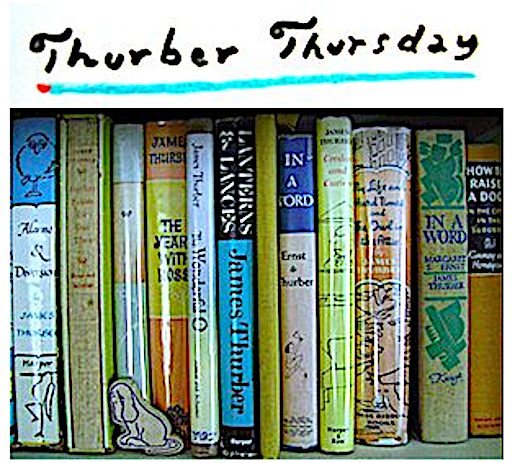The big Thurber news this week is, of course, The New Yorker‘s republication of Thurber’s February 29, 1936 cover (as well as the use of various Thurber animals as Spot drawings throughout the September 4th issue. Below to the left is an original 1936 cover, and the the right, the 2023 cover. Next week I’ll compare the two. Sharp-eyed readers might immediately spot one difference between the older issue’s cover and the new cover (besides date, price, and color).
_________________________________________________________________________
This week, while adventuring through various online sites, I came across yet another book (with Thurber content) I’d never heard of, Life and Laughter.
Michael Barsley put together this humor collection in 1962 (it was published by London Phoenix House).
As you can see, Thurber is listed among those contributing stories. I don’t know who provided the cover art.
Some of the contributing artists names are very familiar: Ronald Searle, Hoffnung, Osbert Lancaster, and Feiffer(!).
After finding Life And Laughter, I looked further into Barsley titles, and came across a more interesting (more interesting to those of us who love Thurber art) Barlsey anthology from 1956, The Phoenix Book Of Modern American Humour.
As you see, the contributors are heavily weighted to New Yorker contributors (Benchley, Parker, Thurber, Woollcott, Perelman, etc.). As interesting (to me) is the use, on the cover, of Thurber’s “Touche!” — one of his more famous drawings.
The drawing was originally published in The New Yorker December 3, 1932, and has been included in numerous Thurber collections over the years (it is, of course, in The Thurber Carnival — the must-have, desert island Thurber collection). Beyond being a great drawing, it stands alone, as far as I know, in the Thurber cartoon canon, as the only time Thurber did a drawing that originated with another cartoonist (the great Carl Rose).
Thurber told the tale in his own The Years With Ross, saying that after Harold Ross (The New Yorker‘s founder and first editor) took a look at Rose’s original sketch, he thought it “too bloody and gruesome, and asked Rose to let [Thurber] have a swing at it, because ‘Thurber’s people have no blood. You can put their heads back on and they’re good as new.'”




